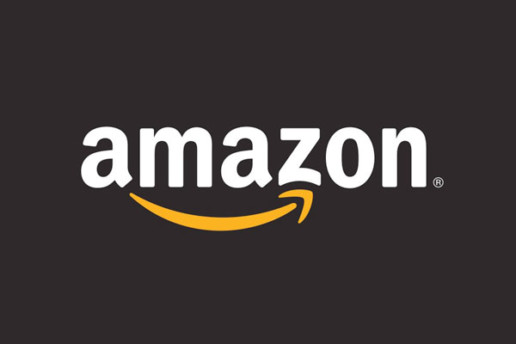Will Amazon-Berkshire-JPMorgan coalition kickstart a benefits revolution?
What will happen if the Amazon-Berkshire-JPMorgan coalition becomes a real thing? Find out in this article from Employee Benefit Advisor.
The announcement that Amazon, Berkshire Hathaway and JPMorgan Chase would form an independent healthcare company for their U.S. employees is just one more move in a growing, albeit relatively quiet, revolution inside the benefits industry: Employers banding together for more control over a health system they see as wasteful and inefficient.
Employee medical expenditures have been the driving factor behind these moves. Last year, premiums for employer-sponsored family coverage hit $18,764, up 3% from the previous year, with employees paying an average $5,714 toward the cost, according to the Kaiser Family Foundation.
Frustration with those costs — and the lack of quality that often goes along with them — has resulted in a number of employer initiatives. But the news of the three corporate behemoths’ coalition may propel even more employers to band together, looking for alternatives on how they provide coverage while driving transparency in an industry notorious for obfuscation.
While it didn’t make the same splash as the big three’s news, two years ago 20 of the country’s biggest companies, including American Express, Berkshire’s BNSF Railway, Caterpillar, Coca-Cola, du Pont, IBM, Ingersoll Rand, Marriott and Verizon, joined together to form the Health Transformation Alliance. The goal of the group is to use data analytics, collective leverage and shared expertise to lower costs for all members. The group has grown to almost 40 members.

And at about the same time, health and financial consulting firm Mercer started running employer collectives to help companies save on pharmacy costs. There also are individual efforts. Intel, notes American Benefits Council president James Klein, has been a leader in direct contracting with healthcare providers.
“When large and successful companies come together in this way, it’s potentially disruptive,” says Frank Easley, senior vice president of Aon’s health and benefits group, about the Amazon, Berkshire and JPMorgan partnership. “The healthcare system is ripe for positive disruption and is in need of new solutions that improve employee satisfaction and reduce costs.”
While the three giants did not detail what their new company would do, they did say in a statement that the entity’s focus will be on technology that will provide employees and their families with “simplified, high-quality and transparent healthcare at a reasonable cost.”
The collaboration will likely pressure profits for middlemen in the healthcare supply chain. Potential ways to bring down costs include providing more transparency in prices for doctor visits and lab tests, and by enabling direct purchasing of some medical items, a person familiar with the companies’ plans said.
Efforts to increase transparency have been an important focus for employers of late and have “enormous potential” when it comes to transforming employer healthcare, says benefits consultant Jack Kwicien. If employers can explain to employees how and where their healthcare dollars are going, it will not only give workers a better understanding of their own money, but it has the potential to build a better relationship between employer and employee.
In addition, Amazon’s e-commerce operation could be used to send medication direct to patient’s homes, saving them trips to a pharmacy. Its cloud-computing division can store patient healthcare records so they can be easily accessed by doctors anywhere. And its payments system could be used to automate payments with healthcare providers.
If Amazon, Berkshire and JPMorgan are successful in lowering costs, the weight of the big three might kick the transformation engine into high gear, leading to a dramatic shift in the benefits delivery as more employers look to use combined leverage to lower their health costs.
“Any time organizations of this caliber — these are world class organizations — say they are going to tackle healthcare, you have to pay attention,” says Mike Thompson, president and CEO of the National Alliance of Healthcare Purchaser Coalitions. The organization advises around 12,000 organizations that buy health plans for millions of employees.
Thompson says that given Amazon and Berkshire’s records, it’s clear “that they have the potential to truly change the consumer experience for their employees, and frankly, that could become a model that could be used by other employers.”
Some benefits insiders, however, express doubts that the three behemoths will spur a widespread industry disruption. Their two biggest doubts: that corporate America can successfully battle the nation’s largest healthcare players and, even if successful, if they can cut costs in a meaningful way.
“Most health costs are incurred by a small percent of the population with chronic conditions,” Klein says. “So if this initiative is just about how health costs are paid for, and does not promote ways to improve health itself, the impact will be minimal.”
Still, business groups say the potential is there for more employer involvement in controlling costs and delivering healthcare, and the need is real.
“New entrants with fresh approaches like these may be just the prescription our ailing healthcare system needs,” says Brian Marcotte, CEO of the National Business Group on Health. “The collective resources of these three companies, emerging technologies and Amazon’s customer obsession and supply-chain savvy gives me optimism that they will pursue a consumer-focused model that will transcend the fragmented, provider-centric delivery system that we have today.”
Read more.
SOURCE: Mayer K. (31 January 2018). "Will Amazon-Berkshire-JPMorgan coalition kickstart a benefitsrevolution?" [Web Blog Post]. Retrieved from address https://www.employeebenefitadviser.com/news/will-amazon-berkshire-jpmorgan-coalition-kickstart-a-benefits-revolution?feed=00000152-175f-d933-a573-ff5f3f230000
Tax Law Fuels Changes to Benefits and Compensation Programs
What changes will your employee benefits embark on with The Tax Cuts and Jobs Act passed? This article from Employee Benefit Advisor touches on the topic.
The Tax Cuts and Jobs Act is fueling changes to corporate America’s employee benefits, compensation and executive pay programs, according to a survey by Willis Towers Watson.
Of 333 large and midsize employers who responded, 49% are considering making a change to at least one of these programs either this year or next.
“The tax reform law is creating economic opportunity to invest in their people programs,” says John Bremen, managing director of human capital and benefits at Willis Towers Watson. “While a significant number have already announced changes to some of their programs, the majority of employers are proceeding to determine which changes will have the highest impact and generate the greatest value.”
The most common changes organizations have made or are planning or considering include expanding personal financial planning, increasing 401(k) contributions and increasing or accelerating pension plan contributions.

Beth Ashmore, the senior consultant for retirement risk management at Willis Towers Watson, says when it comes to expanding personal financial planning and increasing 401(k) contributions, for an employer, the value of making adjustments in those areas is to ensure employees they are going to be taken care of.
“Whenever any employer is thinking about making a change in total rewards, they need to be thinking about it from the perspective of the compensation as the benefit,” Ashmore says. “What is the best value and impact I can make for my employees?”
As for increasing or accelerating pension plan contributions, Ashmore says with the tax law change the majority of employers have a short-term opportunity to make a pension contribution and potentially deduct at a higher tax rate at the beginning of 2018. “Going forward, that tax deduction will be less for a lot of employers under the new tax law,” Ashmore says.
Other potential changes to benefit programs include increasing the employer healthcare subsidy, reducing or holding flat the employee payroll deduction, or adding a new paid family leave program in accordance with the Family and Medical Leave Act’s tax credit available for paid leave for certain employees.
Compensation plans
At least 64% of employers are planning to or considering taking action on their broad-based compensation programs, or have already taken action. The most common changes organization have made or are planning include conducting a review of their compensation philosophy, addressing pay-gap issues and introducing a profit-sharing or one-time bonus payout to all employees.
Steve Seelig, executive compensation counsel at Willis Towers Watson, says when it comes to changing compensation philosophy employers should re-evaluate their pay structure to determine if they want to continue to offer the same compensation.
“Employers may want to consider a more fixed compensation — similar to what Netflix started — where the CEO is paid much more salary and less performance-based compensation,” Seelig says.
Many employers answered questions on addressing pay gaps from the perspective of closing a gender pay gap. However, Seelig says employers could also refer to pay gaps between levels within an organization, such as an associate to a supervisor.
“The CEO pay ratio will be disclosed later on this year and employers could take this time as an opportunity to narrow the gaps between positions before the disclosure,” Seelig says.
Read more.
Source: Olsen C. (28 January 2018). "New tax law fuels changes to benefits and compensation programs" [Web Blog Post]. Retrieved from address https://www.employeebenefitadviser.com/news/new-tax-law-fuels-changes-to-benefits-and-compensation-programs?brief=00000152-1443-d1cc-a5fa-7cfba3c60000
How millennials are shaping employee benefits
By 2025, the millennial generation will make up more than 75% of the U.S. workforce. With this spike and the need for new ways of thinking, employers are updating their benefits packages to entice the future talent of their companies.
Traditionally, the two big-hitting variables for potential employees are, you guessed it, salary and benefits. But what are millennials looking for when it comes to the actual benefits package? They’re looking for good pay and insurance, to be sure, but Care@Work names eight of the most swoon-worthy benefits for the millennial generation including flexible employee benefit options, holistic approaches to wellness, and lifestyle solutions.
Flexible employee benefit options
As the spice girls sing, “I’ll tell you what I want, what I really, really want.” Excuse the pop culture reference, but millennials will get it – and they know what they want. They don’t fit into a cookie-cutter benefits package, and instead look for flexible plans to satisfy their needs. Flexible benefit plans allow employees to choose benefits they want from a package of programs offered by their employer. Flex plans may include health insurance, retirement benefits or reimbursement accounts.
Holistic approaches to wellness
Millennials are constantly bombarded with the notion of living a healthy lifestyle. They are looking for employers who don’t just hand them a health insurance packet but also serve as proactive partners for their health and well-being. They are looking for opportunities to join work-sponsored club sports, health screenings at the campus clinic and lunch-and-learns on low carb Crockpot diets. Can you hear those spice girls singing in the background again? An added bonus: Companies benefit from this approach as well!
Lifestyle solutions
Another hallmark of millennials is the “access over ownership” mentality. With the majority of employees’ everyday lives revolving around technology, companies are finding ways for them to access and elect their benefits online rather than the old pen and paper approach. Millennials want solutions to their everyday responsibilities while they are giving their all on the job. So, other lifestyle solutions they might look for are child care services, therapists and dog walkers. Instead of driving home during your lunch break to walk the dog or pick up the kids, why can’t dogs and kids come to work with you and have their needs met at daycare while you’re on the third floor running from meeting to meeting?
“Employees are looking for the ‘total package’ and that’s what Unum is hoping to offer,” says Ben Roberge, human resources benefit consultant at Unum. “We want to think of benefits in terms of total rewards, combining compensation and benefits to entice and engage existing and future employees.”
Whether you just landed that big job or are still weighing your options, consider if your company is forward-thinking and meeting your needs and wants.
You can read the original article here.
Source:
Dunham H. (21 June 2017). "How millennials are shaping employee benefits" [Web blog post]. Retrieved from address https://workwell.unum.com/2017/06/millennials-shaping-employee-benefits/?utm_sq=flhwx3lz6b&utm_source=Twitter&utm_medium=social&utm_campaign=workwelltweets&utm_content=Benefiting+you
What to consider when redesigning a benefits program
"The secret sauce to getting employees engaged and on board is to create and promote a culture of health." Check out this article from Employee Benefit Advisor for an insight look at designing successful benefit programs.
The concept of design is matching people’s needs with what’s technologically feasible — and redesigning health plans is no different for employers looking to shake things up.
Creating a culture of health, rather than looking at plans as a way to curb costs, should be a priority for benefits executives when they redesign benefits programs, a panel of industry insiders said recently at the National Alliance of Healthcare Purchaser Coalitions conference in Arlington, Va.
Employers must have design standards and strive to make things better for employees, explained Marcia Peterson, manager of benefit design and strategy at Washington State Health Care Authority. That was her strategy when WSHCA redesigned its benefits program. She wanted to change the experience from start to finish and looked to the Bree Collaborative, an evidenced-based quality standard, as her blueprint for design, she said.
The goal of the collaborative is to identify and recommend evidence-based strategies in areas where there is unnecessary change in the way care is delivered and/or increased care that isn’t improving outcomes.
![[Image credit: Bloomberg]](https://assets.sourcemedia.com/dims4/default/439cd5c/2147483647/resize/680x%3E/quality/90/?url=https%3A%2F%2Fassets.sourcemedia.com%2F50%2F14%2F18ee50ce4a0aa49c78100ef0ba68%2Fhealthcare.Office.Bloomberg.jpg)
“What we focused on was the member experience and quality … not cost,” Peterson said, comparing healthcare purchasing to buying a cup of coffee.
“If we bought coffee the way we bought healthcare, it would be awful,” she said, noting consumers would need to get a cup from one vendor, some beans from another and then find someone to grind the beans.
But there is a disconnect in benefit plans between what employers say and what employees feel, added Ron Goetzel, vice president, consulting and applied research, at IBM Watson Health. He suggests employers find what the employee pulse is when designing benefit programs.
“We always look at the cost, but we never ask the consumer about the process,” he said. The secret sauce to getting employees engaged and on board, he said, is to create and promote a culture of health.
Goetzel said employers have the misconception that if they pay employees to quit smoking or eat healthy that they’ll do it. “Money alone won’t do it; it’s got to be an internal motivation,” he says. Employers need to exude health and wellness as a part of the organization. “[Employees] do it because they want to have a healthier family, money may be the wrong signal,” he adds.
In designing benefit plans, the goal should not to contain healthcare costs, said Ray Fabius, co-founder of HealthNEXT, a healthcare consulting group. “The real goal is to bend the healthcare cost curve, and it’s possible,” he said.
For the last 50 years, medical inflation has exceeded general inflation by about two to one, he explained. And that’s despite the fact that “we’ve come up with all these benefit designs — from HMOs to PPOs and now HDHPs and benefit exchanges.” Still, he said, one thing is absolutely certain: changing design by itself is not going to stem the march of higher costs or make a workforce more productive.
Echoing Goetzel, Fabius said that talking to and surveying employees about what they want from their benefits can be insightful and even therapeutic.
“You have to keep the well people well, reduce the risks of the high-risk and help people with chronic illness not succumb to the complication of their chronic conditions,” he said of designing benefit programs.
Read the original article.
Source:
Otto N. (20 November 2017). "What to consider when redesigning a benefits program" [Web blog post]. Retrieved from address https://www.employeebenefitadviser.com/news/what-to-consider-when-redesigning-a-benefits-program?brief=00000152-1443-d1cc-a5fa-7cfba3c60000
SaveSave
SaveSave
SaveSave
How data analytics is changing employee benefit strategies
As technology continues to grow and expand, more employers are turning to digital platforms when it comes to managing their employee benefits program. With more access to technology, employers can use data accumulated from their employees to better personalize their employee benefits package to fit each individual's needs. Take a look at this column by Eric Helman from Employee Benefit Advisor and find out some more tips on how you can better leverage the data from an employee benefits program to fit your employees'es needs.
In the realm of employee benefits, surveys, focus groups and anecdotes about specific employee encounters with the benefits program typically drive the discussions about how that program should evolve in the future. Unlike the situation at Outback, it is difficult to “observe” how people actually consume benefits and tailor a program that is attractive to them.
Fortunately, recent developments in data analytics have unlocked the potential of using consumer behavior insights to drive employee benefits strategy.
Leading practitioners are beginning to leverage these developments to change the annual renewal process. The technologies that support data aggregation, normalization and reporting have been aggressively developed to support the provider and payer communities. Only now have these advancements been made available to employers and their advisers.
The most successful practitioners point to the value of standardized claims reporting based upon credible data. By combining current claims data with industry benchmarks and predictive analytics, employers gain insight into the ongoing performance of their benefit plans. They “see” for themselves what industry professionals have been telling them for years. Plan performance is based upon claims, both in terms of the number of units of healthcare consumed and the price of those units. In recent surveys, benefit professionals report the difficulty they have in convincing CFOs and CEOs to make the necessary changes to benefit programs. Standardized reporting from a credible analytics platform can greatly enhance the ability for benefit professionals to communicate their agenda.
But standardized reporting is not the panacea. Benefits are complex. And the relationship between risk and consumption of healthcare add to the complexity. Even in the best reporting environments where executives are well informed about the performance of their plans and how the key metrics compare to industry norms, they are often perplexed about what to do with the information. Advancements in the realm of “actionable analytics” are beginning to address this problem as well.
While artificial intelligence or AI is all the rage, the underlying concept of having a computer suggest a course of action based upon data is not a new idea. The new application to employee benefits is the ability to provide “suggestions” in the context of standardized financial reporting. The number of ideas to bend the cost curve are numerous. The challenge is matching these ideas with the appropriate populations, convincing decision makers to invest and engaging the appropriate cohorts of employees to take specific actions necessary to realize the return on investment for these initiatives.
New systems are now available to close the gaps on this execution continuum. The foundation for these new systems is a robust analytics platform. But actionable analytics build upon this foundation by evaluating the employer’s data to discern whether a specific cost-saving initiative might generate savings worthy of the investment. These new systems present the output of that analysis in an easy to understand graphical format for benefit consultants and HR professionals to effectively communicate the potential of cost savings initiatives to decision makers.
Targeted engagement maximizes compliance and ROI
Getting executives to commit to intentional actions to affect the rising costs of benefits solves one half of the problem. The second half of the problem is one of focus. Rather than attempting to engage all employees with generalized messaging, these new systems use analytics to focus their engagement on a specific cohort of individuals in order to drive the greatest impact. This focus allows for a concentration of resources on the targeted populations, resulting in increased compliance and larger return on investment. The best implementations are integrated with benefits administration platforms and can incorporate multiple initiatives simultaneously. Point solutions, from an engagement perspective, have been proven to result in single-digit compliance. The power of an integrated engagement solution allows for initiatives that, because they are both focused and automated, can be executed simultaneously.
Advancements in technology have created a new era in which the democratization of big data allows for non-technical professionals to access detailed information and convert that information into intelligence. According to a recent survey, more than 65% of employers confess they are not strategic when it comes to benefits cost management. In spite of the many cost savings ideas available, more than 40% say they are not engaging in any new initiatives in the upcoming year. While the future of healthcare reform is in doubt, the potential for actionable analytics to significantly change the trajectory of the employer’s benefits costs is certain.
See the original article Here.
Source:
Helman E. (2017 September 5). How data analytics is changing employee benefit strategies [Web blog post]. Retrieved from address https://www.employeebenefitadviser.com/opinion/closing-the-execution-continuum-on-employee-benefit-cost-savings
6 employee benefits trends in 2017
2018 is almost upon us. More employers are beginning to start their search for new talent next year. If you are in the process of hiring check out this great article put together by Marlene Y. Satter from Benefits Pro and find out the top employee benefit trends for attracting new talent in 2017.
Employers looking to attract the best new employees need to look closely at their benefits offerings.
That’s according to a CBS report that highlights the six trends in benefits that are of the most interest to prospective employees. With millennials having outpaced GenXers as the largest demographic in the workplace, the report says, “it has become abundantly clear over the course of the last half decade that millennials have very different career priorities than their predecessors.”
With that in mind, here are six types of benefits employers might want to consider, if they’re not already on offer.
Flex hours are high on the list for millennials, who regard life/work balance as very important. In fact, according to a PwC study, it’s more important to them than financial compensation. Flexible schedules provide a way for employers to give that balance to employees, allowing them to work hours other than 9-to-5, or from home part of the week. As a result, the report says, employees will have better job satisfaction and be more likely to stay.
Workplace wellness programs are another way to provide a perk that pays off for both employer and employee — and not necessarily at a high cost, the report says. Not only do such programs foster a strong sense of team unity that will help drive job satisfaction and productivity, they also cut health care costs.
Continuing education not only gives employees a leg up, but also provides employers with better-trained staff who are able to cope with modern challenges and less likely to jump ship in search of a more congenial workplace. While the report concedes that most small and midsize businesses don’t have the budget to provide postgrad tuition to employees, that doesn’t mean that companies can’t focus on such investments in language and software certification classes.
Digital health care solutions enable masters of the cyber world in the workforce to reach out to health practitioners via mobile devices and computers, resulting in faster and more personalized treatment. In addition, the report says, “digital health programs are also incredibly cost effective and are estimated to save billions in medical costs over the next four years.”
Fringe benefits and perks — even if not on the scale of big-budget Silicon Valley companies — are another way to woo millennial employees. Public transportation passes, reimbursing employees for yoga classes and massage sessions and providing free lunches or snacks, can give recruiting an edge over companies that do nothing along these lines, the report points out.
Last but not least, there’s a bigger budget of vacation days. Employers may think that’s too expensive, but employee burnout is responsible for 50 percent of employee churn— and the cost of replacing even an entry-level employee can cost a company up to 50 percent of his or her annual salary. The money spent on extra vacation to avoid burnout could be more than offset by the losses of not doing so. Plus, the knowledge that well-rested employees are more productive will also help to counter the down time that might be caused by those additional days off.
See the original article Here.
Source:
Satter M. (2017 September 5 ). 6 employee benefits trends in 2017 [Web blog post]. Retrieved from address https://www.benefitspro.com/2017/09/05/6-employee-benefits-trends-in-2017?page=2&page_all=1
Closing the execution continuum on employee benefit cost savings
Are you using big data to reduce your employee benefits costs? As more employers switch their employee benefits to a digital platform, big data can be a great tool for employers looking to reduce the costs associated with their benefits program. Check out this great article by Eric Helman from Employee Benefit Advisor and found out how you can leverage your data to reduce to cost of an employee benefit program.
A revolution in employee benefits is on the horizon, and 21st century analytics is at the core. Big data holds the promise to scan huge amounts of information in a near real-time environment for insights that will impact the current and future trajectory for a given area. The advancement of true cross-vendor analytics, prescription, engagement and measurement brought on by the democratization of big data is enabling employers, brokers and consultants to improve the performance of their employee benefits plans like never before.
Two decades ago, I had the opportunity to hear Chris Sullivan, one of the founders of Outback Steakhouse, speak to a group of executives about customer research. His sentiments: “We don’t do focus groups. People don’t know what they want. Who would say they would like to stand in line for 30 minutes to eat salty food in a very loud restaurant? But that is exactly what they wanted. And that is what made Outback a success. Instead of focus groups, we place very talented and engaged proprietors in our stores and teach them to observe what people want. Then, we replicate that experience.”
In the realm of employee benefits, surveys, focus groups and anecdotes about specific employee encounters with the benefits program typically drive the discussions about how that program should evolve in the future. Unlike the situation at Outback, it is difficult to “observe” how people actually consume benefits and tailor a program that is attractive to them.
Analytics drive strategy
Fortunately, recent developments in data analytics have unlocked the potential of using consumer behavior insights to drive employee benefits strategy. Leading practitioners are beginning to leverage these developments to change the annual renewal process. The technologies that support data aggregation, normalization and reporting have been aggressively developed to support the provider and payer communities. Only now have these advancements been made available to employers and their advisers.
The most successful practitioners point to the value of standardized claims reporting based upon credible data. By combining current claims data with industry benchmarks and predictive analytics, employers gain insight into the ongoing performance of their benefit plans. They “see” for themselves what industry professionals have been telling them for years. Plan performance is based upon claims, both in terms of the number of units of healthcare consumed and the price of those units. In recent surveys, benefit professionals report the difficulty they have in convincing CFOs and CEOs to make the necessary changes to benefit programs. Standardized reporting from a credible analytics platform can greatly enhance the ability for benefit professionals to communicate their agenda.
But standardized reporting is not the panacea. Benefits are complex. And the relationship between risk and consumption of healthcare add to the complexity. Even in the best reporting environments where executives are well informed about the performance of their plans and how the key metrics compare to industry norms, they are often perplexed about what to do with the information. Advancements in the realm of “actionable analytics” are beginning to address this problem as well.
While artificial intelligence or AI is all the rage, the underlying concept of having a computer suggest a course of action based upon data is not a new idea. The new application to employee benefits is the ability to provide “suggestions” in the context of standardized financial reporting. The number of ideas to bend the cost curve are numerous. The challenge is matching these ideas with the appropriate populations, convincing decision makers to invest and engaging the appropriate cohorts of employees to take specific actions necessary to realize the return on investment for these initiatives.
New systems are now available to close the gaps on this execution continuum. The foundation for these new systems is a robust analytics platform. But actionable analytics build upon this foundation by evaluating the employer’s data to discern whether a specific cost-saving initiative might generate savings worthy of the investment. These new systems present the output of that analysis in an easy to understand graphical format for benefit consultants and HR professionals to effectively communicate the potential of cost savings initiatives to decision makers.
Targeted engagement maximizes compliance and ROI
Getting executives to commit to intentional actions to affect the rising costs of benefits solves one half of the problem. The second half of the problem is one of focus. Rather than attempting to engage all employees with generalized messaging, these new systems use analytics to focus their engagement on a specific cohort of individuals in order to drive the greatest impact. This focus allows for a concentration of resources on the targeted populations, resulting in increased compliance and larger return on investment. The best implementations are integrated with benefits administration platforms and can incorporate multiple initiatives simultaneously. Point solutions, from an engagement perspective, have been proven to result in single-digit compliance. The power of an integrated engagement solution allows for initiatives that, because they are both focused and automated, can be executed simultaneously.
Advancements in technology have created a new era in which the democratization of big data allows for non-technical professionals to access detailed information and convert that information into intelligence. According to a recent survey, more than 65% of employers confess they are not strategic when it comes to benefits cost management. In spite of the many cost savings ideas available, more than 40% say they are not engaging in any new initiatives in the upcoming year. While the future of healthcare reform is in doubt, the potential for actionable analytics to significantly change the trajectory of the employer’s benefits costs is certain.
See the original article Here.
Source:
Helman E. (2017 September 5). Closing the execution continuum on employee benefit cost savings [Web blog post]. Retrieved from address https://www.employeebenefitadviser.com/opinion/closing-the-execution-continuum-on-employee-benefit-cost-savings?brief=00000152-146e-d1cc-a5fa-7cff8fee0000
5 tips to make this the best open enrollment ever
Open enrollment season is right around the corner. Did you know that most people find open enrollment season more burdensome than tax season? As employers begin engaging their employees on healthcare offerings, check out these great tips by Kim Buckey from Benefits Pro on how you can make this year the best open enrollment yet.
Learn from last year’s enrollment
Look back on how your company fared during last year’s open enrollment period.
What were the most time-consuming tasks, and how can they be streamlined this year? What were the top questions asked by employees? Did you achieve your enrollment goals?
Hold a meeting with key internal and external stakeholders on the team and review what worked and what didn’t work last year. Knowing where you are, what your challenges are and will be, and where you’re on the right track will enable you to create a meaningful plan for this year.
Start with strategy
Once you know where you are, figure out where you want to be, how you’re going to get there, and how you’ll determine if you’ve achieved your goals. Make sure your strategy includes:
- An assessment of all of your audiences. Remember, you’re not just communicating to employees, you’re reaching out to family members and to managers as well. Keep in mind that not every audience member has the same education level or understanding of even the most basic benefits concepts.
- What’s changing. Are you adding or eliminating plans? Is cost-sharing changing? Is there a new vendor? Having a thorough understanding of what’s changing will help determine what your messaging should be.
- Defining your corporate objectives. Are you looking to increase participation in a particular plan option, or shift a percentage of your population to a new plan offering? Increase participation in a wellness plan? What percentage? Define your objectives and how you plan on measuring success.
- Your overall messages — and any specific messages targeted to your audiences. You may communicate differently to people already in the plan in which you want to increase participation, for example.
- A schedule. People need to hear messages multiple times before they “register.” Make sure you’re communicating regularly — and thoughtfully — in the weeks leading up to, and during, the enrollment period.
- Media. What messages will you deliver in print (newsletters, posters, postcards, enrollment guides)? What should be communicated in person, through managers or one-on-one enrollment support?
Make this year’s enrollment more active
Eighty percent of Americans spend less than an hour researching benefit options, and 90 percent keep the same plan from year to year. Yet for most employees, their circumstances change annually — whether it be the number of their dependents, their overall health and health care usage or their pay.
Active enrollment — where an employee must proactively choose a plan or go without coverage — can be an important step in getting employees more engaged in their benefits.
Active enrollment has benefits for the employer as well — it provides an opportunity to collect key data (such as current dependent information) and to direct employees to the most cost-effective plans for them.
But helping employees choose the “right” plan requires a robust communication plan, combining basic information about plan options, decision-making tools that address the total cost of coverage (both premium and point-of-service costs) and even one-one-one enrollment support.
Many employees don’t have the information they need to make good decisions, and aren’t likely to seek it out on their own — it must be ‘pushed’ to them.
Take demographics into consideration
When engaging employees around their benefits options, consider the wants, needs, and communication preferences of each demographic. Employees just starting their careers are the most underinsured (and generally least informed) group, often seeing student debt rather than health coverage as a more pressing priority.
A Harris/Accolade poll reveals that when results are broken out by age cohort, workers under 30 are having the greatest difficulty finding their way through the healthcare labyrinth.
Only 56 percent say they are comfortable doing so, compared to 76 percent of retirees. They also report more challenges in making the best care decisions, including understanding cost, coordinating care, choosing and understanding benefits, and finding a doctor they can relate to.
Understand the limitations of decision support tools
Decision support tools enable people to take an active role in managing their health care. While they can certainly help, remember that employees must seek them out and use them, and these tools often assume a level of benefits knowledge your employees might not have.
And, these tools recently have come under scrutiny for their ultimate lack of measurable results. To see the return on investment and value, you must also provide education and communications to provide some context for, and drive usage of, these tools.
By applying these five steps along with setting your team up with designated roles, responsibilities, and deadlines, you’re well on your way toward a more seamless, efficient and effective open enrollment period and to saving both your organization and your coworkers time and money.
But remember, benefits communication isn’t “one and done” at enrollment. You’ll need a year-round plan to help employees make good decisions about their care once they’ve chosen their coverage.
See the original article Here.
Source:
Buckey K. (2017 Aug 25). 5 tips to make this the best open enrollment ever [Web blog post]. Retrieved from address https://www.benefitspro.com/2017/08/25/5-tips-to-make-this-the-best-open-enrollment-ever?page_all=1
5 Crucial Wellness Strategies for Self-Funded Companies
In the article below from Care ATC, you will learn the importance of health care coverage - self-funded or not - and how to leverage different programs to the benefit of your company and its employees. Explore these five strategies for self-insured companies and find what will work best for you.
You can read the original article here.
Instead of paying pricy premiums to insurers, self-insured companies pay claims filed by employees and health care providers directly and assume most of the financial risk of providing health benefits to employees. To mitigate significant losses, self-funded companies often sign up for a special “stop loss” insurance, hedging against very large or unexpected claims. The result? A stronger position to stabilize health care costs in the long-term. No wonder self-funded plans are on the rise with nearly 81% of employees at large companies covered.
Despite the rise in self-insured companies, employers are uncertain as to whether they’ll even be able to afford coverage in the long-term given ACA regulations. Now more than ever, employers (self-insured or not) must understand that wellness is a business strategy. High-performing companies are able to manage costs by implementing the most effective tactics for improving workforce health.
Here are five wellness strategies for self-insured companies:
Strategy 1: Focus on Disease Management Programs
Corporate wellness offerings generally consist of two types of programs: lifestyle management and disease management. The first focuses on employees with health risks, like smoking or obesity, and supports them in reducing those risks to ultimately prevent the development of chronic conditions. Disease management programs, on the other hand, are designed to help employees who already have chronic disease, encouraging them to take better care of themselves through increased access to low-cost generic prescriptions or closing communication gaps in care through periodic visits to providers who leverage electronic medical records.
According to a 2012 Rand Corporation study, both program types collectively reduced the employer’s average health care costs by about $30 per member per month (PMPM) with disease management responsible for 87% of those savings. You read that right – 87%! Looking deeper into the study, employees participating in the disease management program generated savings of $136 PMPM, driven in large part by a nearly 30% reduction in hospital admissions. Additionally, only 13% of employees participated in the disease management program, compared with 87% for the lifestyle management program. In other words, higher participation in lifestyle management programs marginally contributes to overall short-term savings; ROI was $3.80 for disease management but only $0.50 for lifestyle management for every dollar invested.
This isn’t to say that lifestyle management isn’t a worthy cause – employers still benefit from its long-term savings, reduced absenteeism, and improved retention rates – but it cannot be ignored that short-term ROI is markedly achieved through a robust disease management program.
Strategy 2: Beef Up Value-Based Benefits
Value-Based Benefit Design (VBD) strategies focus on key facets of the health care continuum, including prevention and chronic disease management. Often paired with wellness programs, VBD strategies aim to maximize opportunities for employees make positive changes. The result? Improved employee health and curbed health care costs for both employee and employer. Types of value-based benefits outlined by the National Business Coalition on Health include:
Individual health competency where incentives are presented most often through cash equivalent or premium differential:
Health Risk Assessment
Biometric testing
Wellness programs
Condition management where incentives are presented most often through co-pay/coinsurance differential or cash equivalent:
Adherence to evidence-based guidelines
Adherence to chronic medications
Participation in a disease management program
Provider Guidance
Utilization of a retail clinic versus an emergency room
Care through a “center of excellence”
Tier one high quality physician
There is no silver bullet when it comes to VBD strategies. The first step is to assess your company’s health care utilization and compare it with other benchmarks in your industry or region. The ultimate goal is to provide benefits that meet employee needs and coincide with your company culture.
Strategy 3: Adopt Comprehensive Biometric Screenings
Think Health Risk Assessments (HRAs) and Biometric Screenings are one and the same? Think again. While HRAs include self-reported questions about medical history, health status, and lifestyle, biometric screenings measure objective risk factors, such as body weight, cholesterol, blood pressure, stress, and nutrition. This means that by adopting a comprehensive annual biometric screening, employees can review results with their physician, create an action plan, and see their personal progress year after year. For employers, being able to determine potentially catastrophic claims and quantitatively assess employee health on an aggregate level is gold. With such valuable metrics, its no surprise that nearly 51% of large companies offer biometric screenings to their employees.
Strategy 4: Open or Join an Employer-Sponsored Clinic
Despite a moderate health care cost trend of 4.1% after ACA changes in 2013, costs continue to rise above the rate of inflation, amplifying concerns about the long-term ability for employers to provide health care benefits. In spite of this climate, there are still high-performing companies managing costs by implementing the most effective tactics for improving health. One key tactic? Offer at least one onsite health service to your population.
I know what you’re thinking: employer-sponsored clinics are expensive and only make sense for large companies, right? Not anymore. There are a few innovative models out there tailored to small and mid-size businesses that are self-funded, including multi-employer, multi-site sponsored clinics. Typically a large company anchors the clinic and smaller employers can join or a group of small employers can launch their very own clinic. There are a number of advantages to employer-sponsored clinics and it is worthwhile to explore if this strategy is right for your company.
Strategy 5: Leverage Mobile Technology
With thousands health and wellness apps currently available through iOS and Android, consumers are presented with an array of digital tools to achieve personal goals. So how can self-insured companies possibly leverage this range of mobile technology? From health gamification and digital health coaching, to wearables and apps, employers are inundated with a wealth of digital means that delivering a variation of virtually the same thing: measurable data. A few start-ups, including JIFF and SocialWellth, have entered the field to help employers evaluate and streamline digital wellness offerings.
These companies curate available consumer health and wellness technology to empower employers by simplifying the process of selecting and managing various app and device partners, and even connecting with tools employees are already be using.
Conclusion:
Self-insured companies have a vested interest in improving employee health and understand that wellness is indeed a business strategy. High-performing companies are able to manage costs by implementing the most effective tactics for improving workforce health including an increased focus on Chronic Disease Management programs; strengthening value-based benefit design; adopting comprehensive biometric screening; exploring the option of opening or joining an employer-sponsored clinic; and leveraging mobile technology.
Which strategies or tactics are you considering to implement in 2015?
Source:
Spears, T. (2014 December 19). 5 Crucial Wellness Strategies for Self-Funded Companies[Web blog post]. Retrieved from https://www.careatc.com/ehs/5-wellness-strategies-for-self-funded-companies
4 Reasons Employers Should Offer Supplemental Life Insurance
Is life insurance included in your employee benefits program? For many employees, their only form of life insurance they have is the basic group life plan provided by an employer. This standard version of life insurance is usually not enough to maintain most employees financial wellness. Supplemental life insurance plans can enhance the standard coverage provided by most employers by providing employee financial security for their futures. While these plans can be a great way to boost an employees financial wellness only about one-half of employers across the nation offer supplemental life insurance with their employee benefits. Take a look at this great list put together by Mike Wozny from Think Advisor and find out the top 4 reasons why you should be offering your employees supplemental life insurance.
Depending on an individual family’s needs, supplemental life insurance can build on the employer-provided life insurance benefit, and helps employers give their employees the future financial security their employees need. For those employers who are not currently offering supplemental life, here are four key reasons they should start:
- Many employers can offer employees the financial security of supplemental life insurance without increasing their benefits budget. Because supplemental life insurance is opt-in and chosen by individual employees as appropriate for their situations, employers can offer supplemental life insurance as an option at no additional cost to the employer. Employees can then customize their coverage to their needs depending on their financial responsibilities.
- Many group carriers offer employers help in enrolling employees in supplemental life. Employers can host on-site enrollment sessions lead by a life insurance expert or hold a webinar led by the carrier followed by online enrollment. Many carriers even offer customized enrollment materials for each employee — all without adding to the employer’s human resources teams’ workload.
- Financial security is tied to employees' productivity. The Consumer Financial Protection Bureau has found that when employees have to spend time and energy worrying about providing for their families, they are more productive. Appropriate life insurance is a key factor in overall financial health, and provides employees with the peace of mind that lets them focus their energy elsewhere.
- Comprehensive benefits packages contribute to higher employee satisfaction and retention.The Society for Human Resource Management has also found that benefits offerings are important to employees’ decisions about what companies to work for and how long to stay. Offering a benefits package that includes supplemental life insurance coverage allows employees to customize benefits to their own needs.
With the loss of a loved one, many families also lose their income, which can be not only emotionally devastating, but financially devastating as well. When employers offer a complete benefits package, including one that promotes financial wellness, it gives their employees peace of mind, and helps attract and retain top workers.
Though life insurance is rarely a topic that families want to think about, employers can help employees obtain the right amount of insurance to protect their finances by offering supplemental life insurance options. For those employers who are not currently offering these benefits, in many cases they can be added at no expense, with little additional time required to administer them, and at great potential benefit to both the company and its employees.
See the original article Here.
Source:
Wozny M. (2016 October 19). 4 reasons employers should offer supplemental life insurance [Web blog post]. Retrieved from address https://www.thinkadvisor.com/2016/10/19/4-reasons-employers-should-offer-supplemental-life









